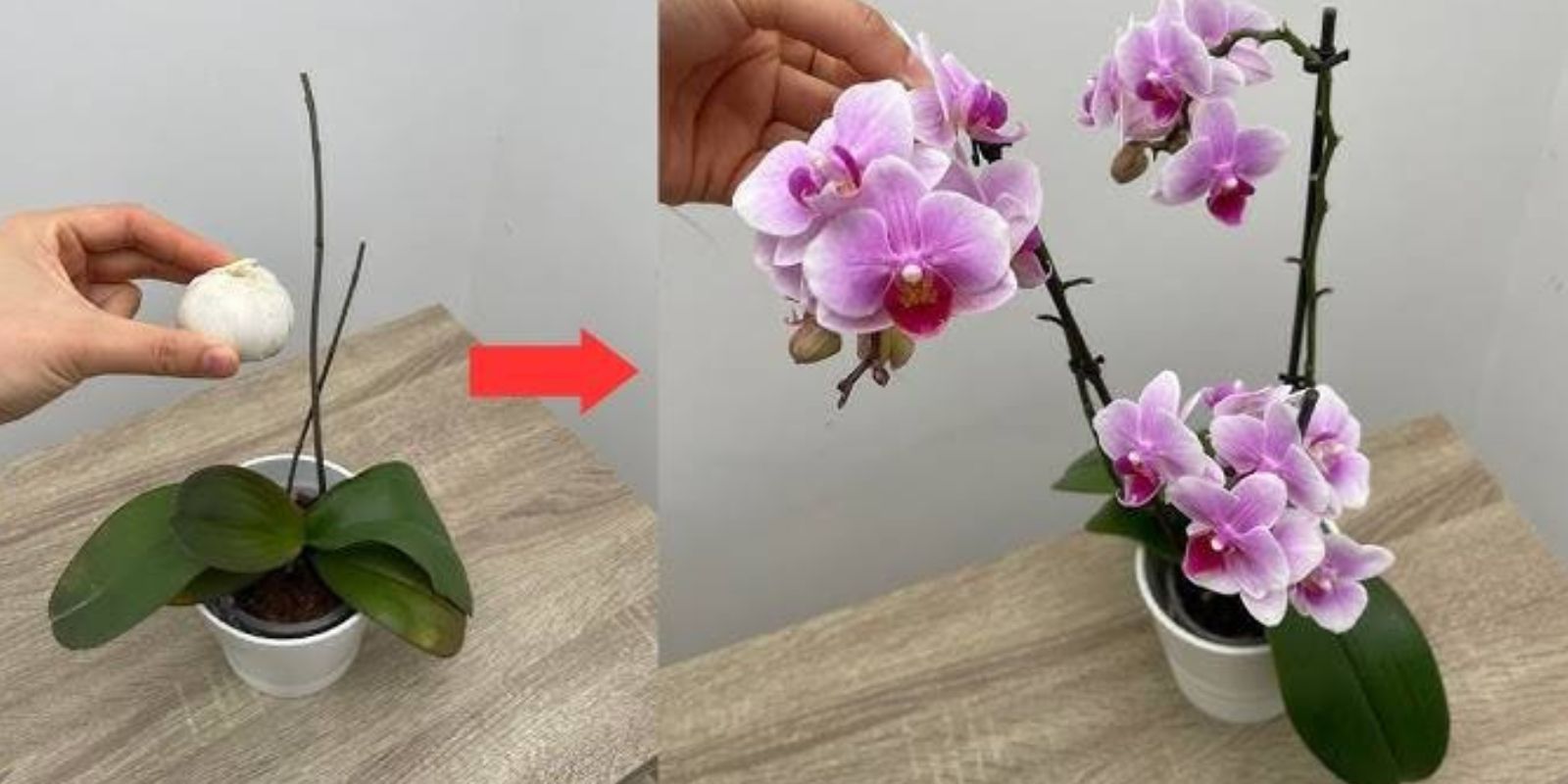Orchids are one of the most beautiful and elegant houseplants, but many gardeners struggle to keep them blooming consistently. If your orchid has stopped producing flowers or appears weak, don’t worry! With the right care and a simple monthly natural treatment, you can stimulate continuous blooming and keep your plant healthy all year long.
In this guide, we’ll explore the best techniques, homemade composts, and natural fertilizers that will help your orchid thrive. Even if your plant looks like a dried stump, these methods can revive it and encourage vibrant, non-stop blooms.
Why Orchids Stop Blooming
Before we dive into the solutions, let’s understand why orchids might stop flowering:
- Insufficient Light – Orchids need bright, indirect light to produce flowers.
- Overwatering or Underwatering – Too much or too little water can stress the plant.
- Poor Humidity Levels – Orchids thrive in high humidity, typically 50-70%.
- Nutrient Deficiency – A lack of essential nutrients prevents proper growth.
- Improper Repotting – If an orchid is repotted too often or incorrectly, it may go into shock.
If you’re facing any of these issues, don’t worry! Below are simple yet powerful tricks to restore your orchid’s health and boost blooming.
The Key to Non-Stop Orchid Blooms: One Cup a Month
By giving your orchid a cup of natural fertilizer every month, you can provide essential nutrients and moisture to stimulate flowering. Here’s how to do it:
Step 1: Maintain Proper Moisture Levels
- Why? Keeping the roots hydrated ensures that nutrients are properly absorbed.
- How?
- Water your orchid when the roots look silver or dry.
- Avoid letting water sit in the pot to prevent root rot.
- Increase humidity with a humidity tray or by misting the leaves.
Step 2: Use Organic Compost for Flower Growth
- Why? Natural compost provides slow-releasing nutrients that promote healthy blooms.
- How?
- Once a month, soak the orchid’s roots in clean water for 30 minutes to wash away old fertilizer.
- Apply homemade natural fertilizers (detailed below).
Best Homemade Fertilizers for Orchids
Instead of relying on synthetic fertilizers, you can use natural composts to feed your orchids. These easy-to-make fertilizers will provide the right balance of nutrients to enhance flowering.
1. Beet Compost for Rapid Growth
Beetroot is rich in iron, potassium, and antioxidants, which help stimulate strong root and flower development.
How to Prepare:
- Take 1 small beet (about 30g) and slice it.
- Blend it with 1 liter of water until smooth.
- Strain the mixture to remove solids.
- Use the liquid to wipe the leaves and spray the entire orchid.
Results: This method enhances leaf strength, prevents yellowing, and stimulates flowering.
2. Rice Water for Orchid Hydration and Nutrition
Rice water is packed with vitamins, amino acids, and minerals, which promote orchid health and flower production.
How to Prepare:
- Take 5 tablespoons of uncooked rice and rinse it in 500ml of water.
- Strain the rice and collect the starchy white water.
- Use this water to spray orchid leaves or soak the roots for 1 hour.
Results: Your orchid will absorb essential minerals that boost flower growth and keep the leaves lush.
3. Frozen Rice Water for Easy Use
If you want to make orchid care even easier, you can freeze rice water into ice cubes for later use.
How to Use:
- Pour rice water into an ice cube tray and freeze it.
- Once a month, thaw a cube and use it to water your orchid.
Results: This method provides a slow-release nutrient boost without the risk of overfeeding.
Additional Tips for Continuous Blooming
To maximize your orchid’s flowering potential, follow these extra care tips:
🌿 1. Provide Bright, Indirect Light
- Place your orchid near a window with filtered sunlight.
- Avoid direct sun exposure, which can burn the leaves.
💨 2. Improve Air Circulation
- Orchids thrive in good airflow, which prevents disease.
- Use a small fan near the plant to mimic natural breezes.
🌡️ 3. Keep Ideal Temperature & Humidity
- Orchids prefer 65-75°F (18-24°C) during the day.
- Keep humidity between 50-70% to encourage blooming.
🪴 4. Use the Right Potting Medium
- Bark-based orchid mix provides proper aeration.
- Avoid regular potting soil, as it retains too much moisture.
✂️ 5. Prune Spent Flower Stems
- Once flowers fade, trim the stem above a node.
- This encourages new flower spikes to form.
Conclusion: Bring Your Orchid Back to Life!
By following these simple steps, your orchid will bloom beautifully year-round. With just one cup of natural fertilizer per month, you can strengthen the roots, nourish the leaves, and promote continuous flowering.

